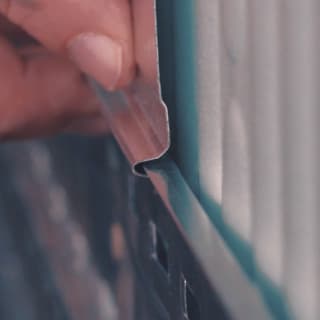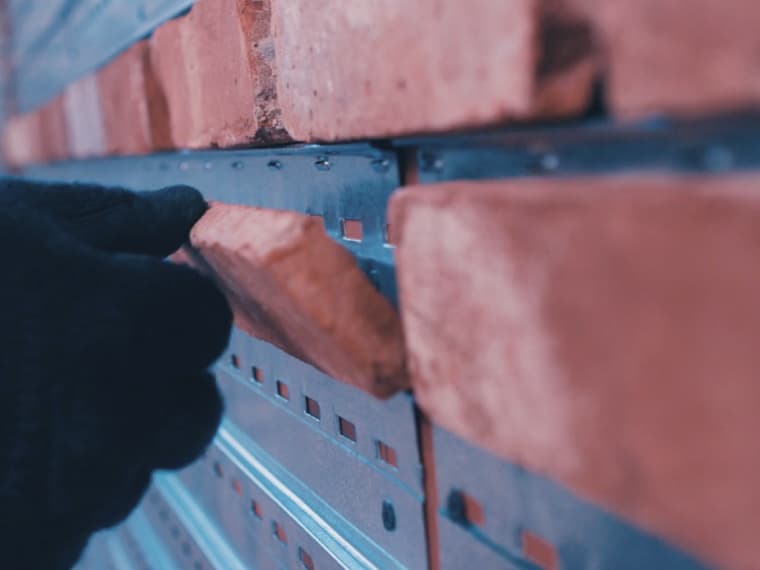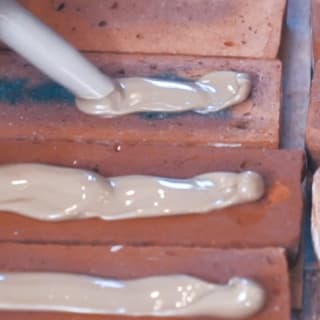Installation Systems
Tools & Other Products
Brands

Our patented metal grid system stands as the most straightforward and cost-effective method for thin brick installation. Our research indicates a significant reduction in job complexity and up to five times increased efficiency in brick adherence compared to traditional methods. While installation specifics may vary based on job conditions and substrate, the general idea is outlined in the steps below.
The continuous ledge design removes the necessity for starter channels and seamlessly accommodates corner returns.
The panels feature an interlock system with a female section at the bottom and a male section on top. Adhesive holes facilitate the flow of adhesive, bridging gaps caused by "oil canning." Mortar locks securely hold the mortar in place.


Brick it® adhering method allows for thin brick installations even when temperature falls below freezing.
Three adhesive spreading methods are used depending on application; typical horizontal 3/8” bead recommended for interior use, dime sized three dots in the back of each brick and multiple vertical 3/8” beads for exterior MCS system.


Brick it® mortar comes pre-mixed with all the components. Just add water.
Brick joint finishes can vary based on factors such as the brick type, geographical preferences, or customer choices. The widely favored finish is the "Concave," commonly applied in commercial settings. For Handmade bricks, the "Grape Vine" finish is popular, while "Over Grout" is often chosen for Reclaimed bricks.



If you need help with your order or consult our design experts for advice, do not hesitate to contact us. We're happy to help!